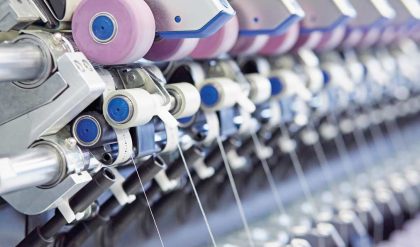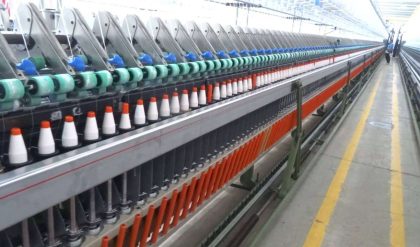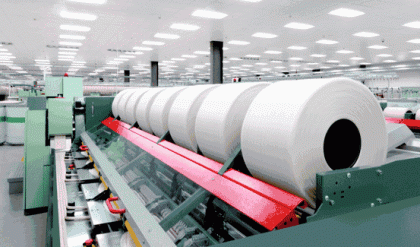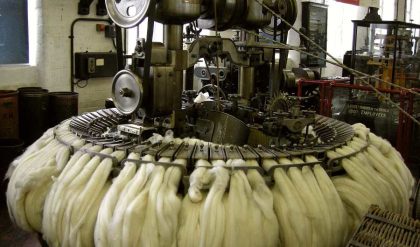Although ring spinning has the advantage over earlier systems of higher production speeds and consequently reduced labour costs, the largest size of yarn package that could be built was limited by the ring size. Further the ring size limited also the traveller speed and thereby the spindle speed. This is because the frictional drag of the ring on the traveller can generate a high temperature at the ring–traveller interface; such temperatures can be reached where the traveller locally melts and central forces eject it from the ring. A significant amount of research and development (R&D) has been invested in improving the design of the ring–traveller combination and in the materials and surface coating that can be used to improve heat dissipation of the traveller and increased traveller speed.4 However, the general consensus is that traveller speeds are limited to 40 m min–1 and therefore spindle speeds and production speeds are restricted.
The limitation of the package size while operating at the highest possible spindle speed brought with it increased labor cost for doffing and unwanted machine down-time during doffing. Modern ring-spinning machines exhibit very sophisticated engineering developments which circumvent many of these drawbacks, such as automated doffing and link-winding, so that larger packages can be built from spinning bobbins on an attached re-winding machine.
Twist Spinning Methods:
Open-end Spinning Method:
Open-end spinning also referred to as O.E. spinning or break spinning is a process in which the input material to the spinning system is highly drafted, ideally to the individual fibre state. The individual fibres are subsequently collected onto the tail end of a seed yarn (i.e. the open end) that is rotated to twist the fibers into the yarn structure and thereby form a new length of yarn. The spinning is continuous as the input material is continuously fed and fibres are continuously collected onto the open end of a previously spun length. Currently two techniques employ the O.E. method commercially, namely rotor spinning and friction spinning. Both use a rotating roller having angled points projecting from their peripheral surface to remove a small number of individual fibres at a time and transport them to a collecting surface holding the yarn tail.
Rotor Spinning:
The productivity limitation of the ring spinning system was recognized long before the commercial introduction of rotor spinning in 1967. In ring spinning, the twist insertion rate is dependent on the rotational speed of the yarn package. This is so because of the continuity of the fibre flow during spinning. Numerous attempts have been made since before the end of the 19th century, particularly since the 1950s, to introduce a break into the fibre flow so that only the yarn end needs to be rotated to insert twist. Very high twisting speeds can thus be achieved. In addition, by separating twisting from package winding, there will be much more flexibility in the form and size of the yarn package built on the spinning machine. This increases the efficiency of both the spinning machine and of subsequent processes. Rotor spinning was the first such new technology to become commercially successful and it is the second most widely used yarn production method after ring spinning.
Developments in rotor spinning include the use of longer machines. Additionally, there is interest in potentially using rotor technology to produce core yarns and using additional components to create effect yarns.
Advantages of Rotor Spinning:
· Lower labor cost
· Less power consumption
· Larger the package size
· Cheaper raw material
· Less floor space
· Easy handling
· Elimination of roving, so no need speedframe machine
· Higher productivity, as higher speed





